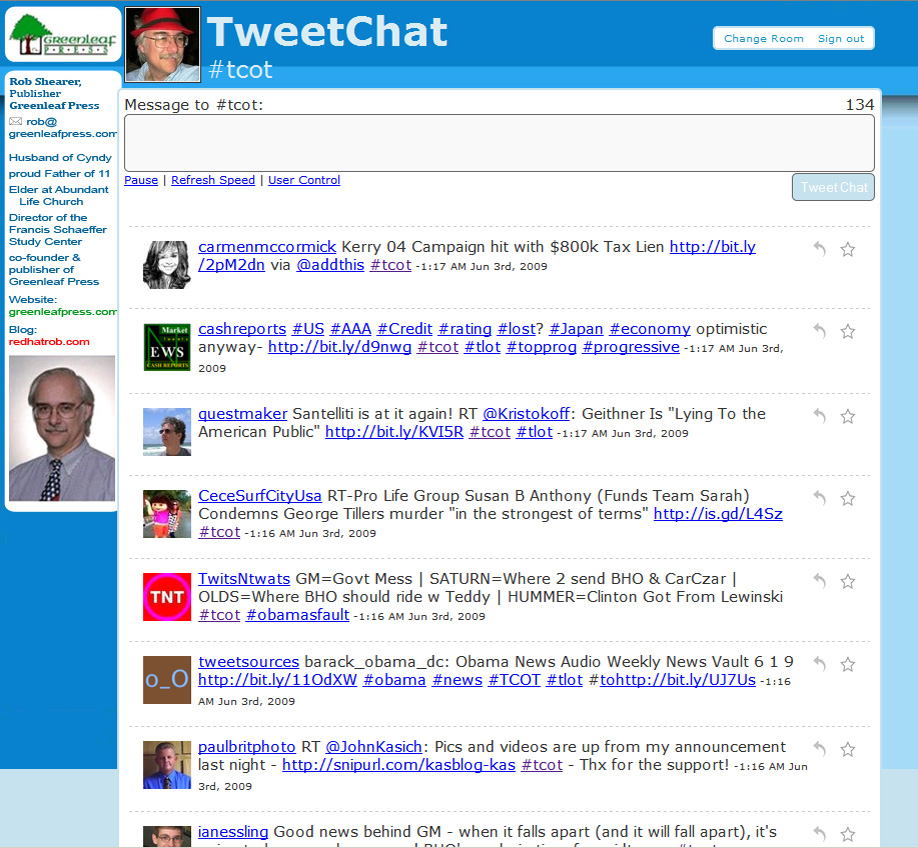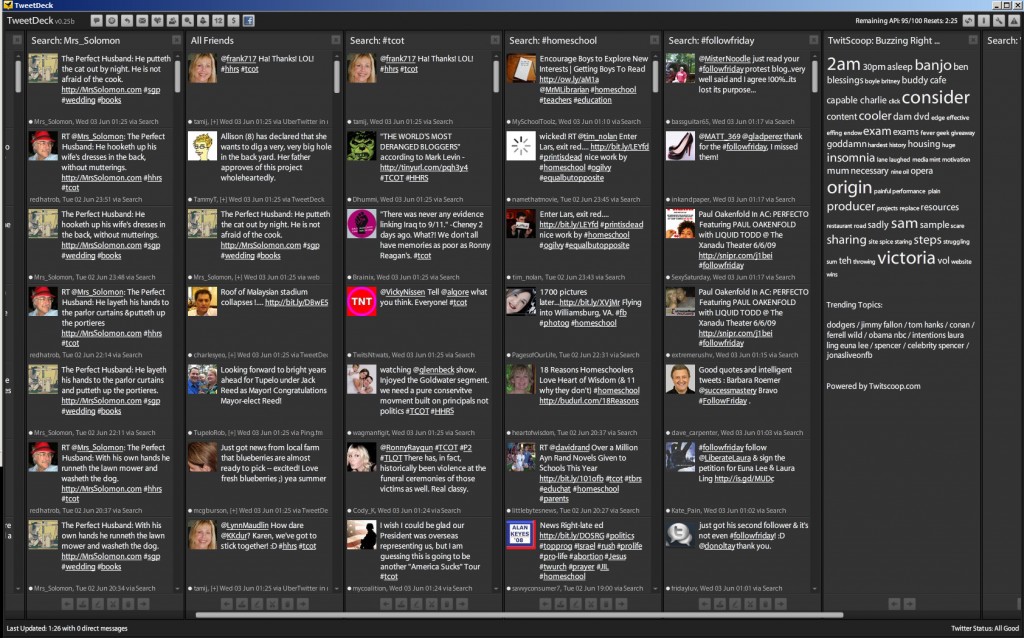One of the intimidating parts of the Web 2.0 / Social Networking phenomenon is figuring out how to use it – and how it’s being used. The awkwardness of trying a new online experience can be daunting.
To my fellow boomers, I have two exhortations:
1) Anything worth doing, is worth doing badly (at first!)
2) The Gen X & Gen Y folks don’t know what they’re doing either. They just jump in and make it up as they go along. We can join them!
Twitter can be a great time-waster – but then, so can the telephone (and so can email). But, if you exercise some self-discipline, Twitter can be a very useful tool. Twitter connects you to other individuals, who you otherwise might never have contact with, who can provide you with information, answers to questions, encouragement, or for whom you can provide the same.
With that in mind, I’d like to recommend two tools that will help you understand, use, and then master Twitter (and help you avoid becoming obsessed with or distracted by it).
The first is Tweetchat. In a previous post, I observed that Twitter could be thought of as a giant on-line chatroom, with thousands of conversations taking place simultaneously. Think of it as going to a reception with several hundred other folks, all of whom want to talk about politics, or homeschooling, or religion, or fashion, or organic food. How will like-minded folks find each other? With a crowd of only 100 or so, you’d probably wander around the room and listen for snippets of talk on the topics you were interested in and join the ones that seemed really interesting. This is somewhat the way deciding to “follow” another Twitter user works. It means you want to listen to the things they are saying.
Now imagine that instead of a small gathering of 100, you’re walking into the Superdome with 75,000 other people. You’d need a more efficient way to find the folks talking about the things you are interested in. This is where hashtags come in.
The size of Twitter is several orders of magnitude larger than our Superdome thought-experiment. Twitter hasn’t released official statistics, but there are traffic estimates for their website that showed 4-5 million website hits in February and over 20 million in April. One estimate I saw recently estimated one million messages a day.
Twitter users have spontaneously developed a convention in which users voluntarily “index” their own tweets by dropping into their messages a “hashtag” which gives an indication of the topic of their message. I routinely check to see who has posted Twitter messages with the hashtag #homeschool. At this point there are only a few dozen messages a day, though at times there might be a flurry of messages, especially if two or more users are on at the same time and following the same tag.
There are some tags which are MUCH more popular. You can go to http://hashtags.org to get a live, updated list of what hashtags are currently most in use on Twitter.
But how do you actually listen in on these streams of messages? That’s where Tweetchat (which I’ve just discovered) comes in. Tweetchat lets you sign in to a “room” which is defined as the stream of messages all using a particular hashtag. One of the perennial top hashtags on twitter is #tcot. #tcot stands for Top Conservatives on Twitter. There’s a fairly large number of Twitter users out there 24/7 who use that tag to share links to web sites, blog postings, Youtube videos, etc. along with their own observations (mostly political. Tweetchat lets you pull up that stream of messages and watch as they are being posted, live – the stream of messages scrolls down your screen as the new ones are posted.

To try it with the hashtag #tcot, click here: http://tweetchat.com/room/tcot. You’ll need a Twitter account to access this (you do have a Twitter account, don’t you?), and Tweetchat will ask you for your Twitter username and password. It’s ok to go ahead and enter them. This will allow you to post your own Twitter messages to others using the hashtag, should you decide you want to join the conversation.
And what is Tweetdeck? Think of it as Tweetchat on steroids. Tweetdeck lets you define multiple columns of messages based on search criteria and have them scrolling on your monitor (helps if you have a widescreen monitor – or better yet, a multiple monitor setup). Each column can be a search based on a different hashtag, or just a set of keywords.

Tweetchat and Tweetdeck are especially useful when there is some breaking, realtime news event. There will rather quickly (and spontaneously) develop a hashtag associated with the event and once you find it (try checking hashtags.org first), you can see real-time observations / contributions from individuals all over the world, often from multiple on-the-ground observers who can contribute their own eyewitness information.
When George Tiller was killed in Wichita two days ago, a stream of messages quickly began to be posted on Twitter using the hashtag #tiller. Tonight I learned from messages in the stream that the murderer of Dr. Tiller had been spotted vandalizing the clinic on Saturday the day before, his license number had been noted and called in to the local police and the FBI. This detail has not been widely reported. A word of caution, the messages in this stream are raw and angry – for understandable reasons. But dipping into it is not for the faint of heart.
enough on Twitter for tonight. I need to shut-down and get some rest.
– Rob Shearer (http://twitter.com/RedHatRob)